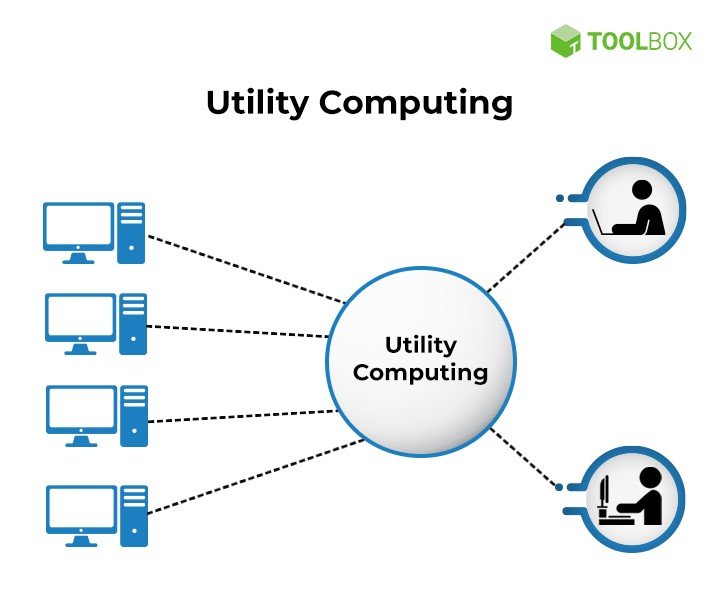Utility computing is the practice of providing computing resources on a pay-per-use basis. It offers businesses the flexibility to scale resources up or down based on their needs, akin to paying for electricity or water usage. Companies can access computing power, storage, and services through the cloud, eliminating the need for large upfront investments in hardware. This model allows for efficient resource allocation and cost savings, making it a popular choice for organizations seeking agility in their operations. Utility computing revolutionizes how businesses harness technology to drive growth and innovation.
What is Utility Computing: A Comprehensive Guide
Welcome to our guide on utility computing! If you’ve ever wondered about the cloud, storage, and computing power all magically available whenever you need it, you’re in the right place. In this article, we will delve into the world of utility computing, explaining what it is, how it works, and why it’s essential in today’s digital age.
The Basics of Utility Computing
Imagine you have a magic box that can do anything you ask it to do. Need to store files? Done. Want to crunch numbers really fast? No problem. That’s the essence of utility computing. It’s like having a super-smart friend who is always ready to help you out with any computing task you throw their way.
Utility computing is based on the idea of paying for what you use, just like electricity or water. You only pay for the computing resources you need, whether it’s storage, processing power, or software applications. This pay-as-you-go model makes it cost-effective and flexible for individuals and businesses alike.
How Does Utility Computing Work?
Utility computing operates in the cloud. No, not the fluffy white things in the sky, but a network of remote servers that store and manage data and applications. When you need computing resources, you can access them over the internet, without having to invest in expensive hardware or software.
Think of it as ordering food from a restaurant. You choose what you want from the menu, and the chef prepares it for you. With utility computing, you select the computing resources you need, and the cloud server provides them to you. It’s fast, convenient, and scalable.
Benefits of Utility Computing
1. Cost-Effective
One of the significant advantages of utility computing is its cost-effectiveness. Instead of spending a fortune on setting up your own data center, you can simply pay for the resources you use. This is particularly beneficial for businesses looking to scale up or down based on their needs.
2. Scalability
Scalability is another key benefit of utility computing. You can easily increase or decrease your computing resources based on demand. This flexibility allows you to adapt to changing requirements without any hassle.
3. Accessibility
With utility computing, your data and applications are accessible from anywhere with an internet connection. This means you can work on projects, collaborate with others, and access important information on the go, making it perfect for our fast-paced world.
Real-World Applications of Utility Computing
Utility computing is everywhere, even if you don’t realize it. Here are some examples of how utility computing is used in everyday life:
1. Streaming Services
When you watch your favorite show on Netflix or listen to music on Spotify, you’re benefiting from utility computing. The vast amounts of data stored and processed to deliver seamless streaming experiences are made possible through utility computing.
2. E-Commerce Platforms
Online shopping platforms like Amazon or eBay rely on utility computing to handle the massive amounts of data generated by users browsing, buying, and selling goods. The scalability and flexibility of utility computing ensure these platforms can meet customer demands efficiently.
3. Social Media Networks
Facebook, Instagram, Twitter – all these social media platforms utilize utility computing to manage user data, display content, and enable interactions across millions of users worldwide. The reliability and accessibility of utility computing are key to keeping these platforms running smoothly.
The Future of Utility Computing
As technology continues to advance, utility computing is poised to play an even more significant role in our lives. From artificial intelligence and machine learning to Internet of Things (IoT) devices, the demand for flexible and scalable computing resources will only grow.
By understanding the basics of utility computing and its benefits, you are better prepared to navigate the digital landscape and leverage this powerful technology to your advantage. Whether you’re a student, a professional, or a business owner, utility computing offers a world of possibilities at your fingertips.
So next time you’re browsing the web, streaming your favorite music, or shopping online, remember that utility computing is working behind the scenes to make it all possible. Embrace the magic of utility computing and unlock the potential of the cloud!
Thank you for reading our comprehensive guide on utility computing. We hope you found it insightful and informative. Stay tuned for more exciting tech topics and tips!
What is Utility computing?
Frequently Asked Questions
What is utility computing?
Utility computing is a model where computing resources and services are provided on-demand and charged based on usage, similar to how we pay for utilities like electricity or water. It allows users to access computing resources such as processing power, storage, and software applications as needed without having to invest in and manage their own infrastructure.
How does utility computing differ from traditional computing models?
Unlike traditional computing models where organizations had to build and maintain their own data centers with fixed capacities, utility computing offers scalability and flexibility. With utility computing, users can easily scale up or down their resources based on demand, paying only for what they use.
What are the benefits of adopting utility computing?
Adopting utility computing can bring several benefits, including cost efficiency, scalability, flexibility, and improved resource management. Organizations can reduce upfront capital expenses, avoid over-provisioning of resources, and quickly adapt to changing business needs by leveraging utility computing services.
How can businesses leverage utility computing for their operations?
Businesses can leverage utility computing by outsourcing their IT infrastructure needs to cloud service providers who offer utility computing services. By migrating to the cloud, organizations can access a wide range of computing resources and services on a pay-as-you-go basis, freeing up internal resources to focus on core business activities.
Final Thoughts
In conclusion, utility computing refers to a model where computing resources are provided on-demand, like electricity or water. This pay-as-you-go approach allows businesses to scale resources as needed, reducing costs and increasing efficiency. With utility computing, companies can access computing power and storage easily, without the need to invest in expensive infrastructure upfront. Embracing this concept can help organizations adapt to changing demands and optimize their operations effectively.






